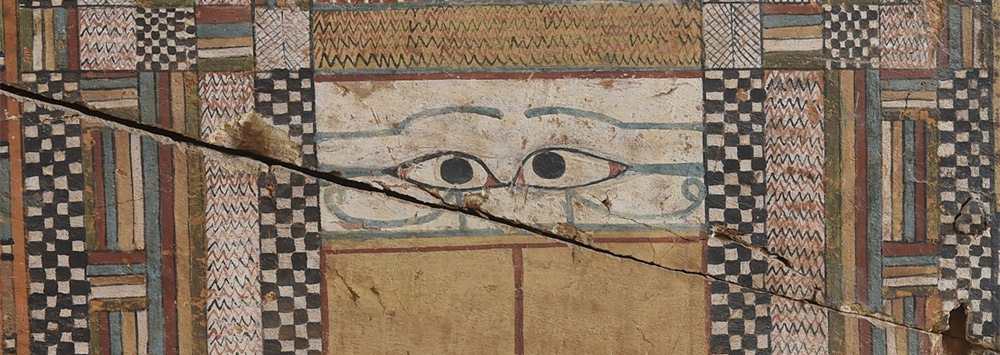Thursday 2 May 5pm (UK) | Rendall Seminar Room 4 or Online | Open to the public, and University of Liverpool staff and students
Abstract
The Lower Necropolis of Beni Hassan plays an extraordinary role in the funerary archaeology of the Middle Kingdom. No less than 900 tombs were excavated during two archaeological seasons in 1902/3 and 1903/4 by John Garstang from the University of Liverpool, resulting in the discovery of numerous decorated wooden box coffins. They represent the largest corpus of coffins, which comes from a single cemetery, derives from the same archaeological excavation, and covers the entire Middle Kingdom. Due to the division of the finds common at that time, however, they were distributed all over the world and most of them fell into oblivion.
In the course of the project Painted for Eternity conducted at the University of Vienna 74 coffins (or fragments thereof) from Beni Hassan could have been located in more than 30 different museums all over the world and subjected to an art-historical analysis. Moreover, an in-depth examination of the distribution lists and the correspondence related to the find distribution, either published or preserved in the archives of the University of Liverpool, as well as the study of more than 700 excavation photographs kept in the Garstang Museum of Archaeology, revealed that in total more than 260 coffins must have been discovered, some 220 thereof decorated.
The project focused on the study of the painted decoration of the coffins from an art-historical perspective, analysing their decorative scheme, the ornamental texts as well as the iconography of the individual decorative elements. The study revealed the existence of a well-established local tradition and important phenomena became visible in the coffin corpus: a) an extensive use of templates (for ornamental and non-ornamental texts as well as for the figurative decoration), b) prefabrication, and c) reuse. Moreover, the coffins allowed conclusions to be drawn about various aspects of the manufacturing processes such as drafting. The lecture shall provide insight into the most important project results.
Suggested Readings
We strive to encourage scholarly debate around the presentation. For that purpose, the speaker has been asked to provide a range of readings that would help the student audience gain familiarity, if and where needed, with the context in which the specialized research is embedded.
- Hudáková, L. (2022) "The Acquisition of a Coffin – Tracing the (Art) History of the Coffin of Neby (MFA 04.2058): From Dayr al-Barsha to Beni Hassan to Boston” in Miniaci, and Grajetzki (eds), The World of Middle Kingdom Egypt III, London: 187-205. Download
- Ilin-Tomich, A., (2018) “Centralized and Local Production, Adaptation and Imitation”, in Miniaci, Moreno Garcia, Quirke and Stauder (eds), The arts of making in ancient Egypt: voices, images and objects of material producers 2000-1550 BC, Leiden: 81-100. Download
Image Copyright
Image of the coffin of the estate manager Khnumnakht found in the tomb BH 585, detail of the front side. Cairo JdE 37569 © Ahmed Amin. Courtesy of the Egyptian Museum Cairo.
